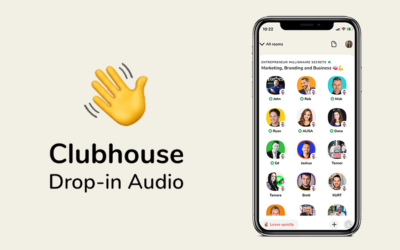What is SEO?
SEO stands for Search Engine Optimization. It means telling the search engines like Google what your site is all about. You need to specify it to Google so that when somebody searches for a relevant keyword, your website appears with a solution.
Why do you need SEO?
If it wasn’t obvious from the above paragraph, in simpler terms, cause you want to traffic. However, everybody wants to be first, so only one can be first, pretty straight forward. No matter how good your site or your content is, it’s of no use if nobody can see and utilize it. SEO has you get that initial traffic, which helps to get even more traffic and start a snowball effect.
SEO also helps in the following:
Build a Brand
Increase Domain Authority; we take a look at this later.
Build trust with the audience
Get more traffic, revenue, sales, etc.
What should you do to improve your website’s SEO?
You might be saying.
Hey strange man on the internet, now I understand why and what is SEO but tell me how to improve SEO. Ok mate, I’ll assume you’re a complete beginner.
1) Sign Up for Google Analytics and Search Console:
You might have already used a Google Account; if not, why?? It’s 2021, and Google’s everywhere, anyways; you learn how to sign up for Google here. Then sign in to the Google Analytics.Similarly, sign in to Google Search Console
2) Submit sitemap to Google:
You can do this manually or use a plugin to do it according to the service you’re using. If you’re using WordPress, I would recommend you RankMath, and if you something like Squarespace or Wix, respective methods can be easily found online.
3) Make your site secure with an SSL certificate:
<Websmaster Alert, you might need your webmaster to do this>
Since 2018, the most popular browsers show your site as not secure if you don’t use an SSL certificate. What is an SSL certificate? It’s a thing that makes your website http://example.com to https://example.com. The S in https stands for secure, and you must have it because, in 2020, it’s no longer gives a competitive edge; instead is a necessity.
4) Create SEO Optimized Contents:
Easier said than done, but content creation is a must in 2020. According to several studies, more than 80% of customers build a positive association with a company after reading their original content.
The best example, in my opinion, is Grammarly, a tool for better writing. Their tool is incredible and might have gained popularity on its own, but also, they have a fantastic blog, which must probably bring more customers than paid advertisements. That’s the power of SEO.
5) Mobile Friendliness:
In 2019, mobile traffic surpassed that of PCs. Recognizing that Google will now rank based on the device used, theoretically, you could be first in a Pc search but ranked a lot lower in phones. Google uses a Mobile-Friendliness test to ensure your website is mobile-friendly or not. Make sure you pass it and, if possible, outperform your competition in optimizing for the phones.
6) Site Speed:
The time it takes to load your website is one of the most critical factors in SEO. Ideally, you want your site to load under 4 seconds or even less. In a study, it was found that 40% of visitors left the site when a load time of a site was more than 3 seconds. Ouch!!!! Not only SEO, but site speed is also essential for sales and traffic. Tap the following to know ways to increase your site speed.
a) Use a CDN:
CDN stands for Content Delivery Network; it stores your website data in their server. When users visit your website, instead of pulling all the data from your server, data is loaded from the nearest location to the user—reducing the load time. I recommend you use Cloudflare.
b) Optimized Images:
Unless you are a photographer, there’s no point in using images straight from your camera or smartphone. They have many unessential details, making the image size bigger and thus increasing your site’s load time. So use websites like tinypng.com to compress the images.
That’s optimization in size, but we are not done yet. You should name the images with the relevant title before uploading them to your site; this helps your images be found easier in Google Image Search.
c) Use caching:
I recommend you take a backup before using a caching solution. It’s best if you can avoid this, but even after doing all these, you can’t get the desired load time, then, by all means, use caching. There is a lot of option, and W3 Total cache is the most popular, and I have no problem recommending it. But remember to act with caution.
d) Drastic Measure – Change your hosting plan:
Even after doing everything, your site takes ages to load; then, it might be time to change or upgrade your hosting/ hosting plan. Hosting is where your website is stored, and hosting providers enable speed accordingly to your plan.



0 Comments